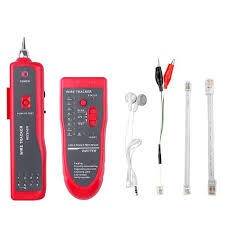It seems like you're referring to a "Cable Noise Tracker." This device is designed to locate noise or interference on cables, especially in audio or video systems. It's a handy tool for audio/video professionals, electricians, or anyone troubleshooting signal quality issues in cabling.
Here's how a typical Cable Noise Tracker might work:
1. **Detection:** The device detects electromagnetic interference (EMI) or radio frequency interference (RFI) present on cables. This interference can come from various sources such as nearby power lines, motors, or other electronic devices.
2. **Localization:** The tracker helps localize the source of the noise along the cable path. It can determine whether the interference is originating from a specific section of the cable or from external sources nearby.
3. **Indication:** The device usually provides visual or audible feedback to indicate the presence and strength of the noise. This feedback helps users identify and troubleshoot the problem effectively.
4. **Filtering:** Some advanced models may offer filtering options to distinguish between different types of interference or noise sources. This can help users isolate the specific cause of the problem more accurately.
5. **Portable and Easy to Use:** Cable noise trackers are typically compact and portable, allowing users to carry them easily to different locations for troubleshooting purposes. They are designed to be user-friendly, with simple controls and intuitive operation.
Overall, a Cable Noise Tracker is a valuable tool for diagnosing and resolving noise or interference issues in audio, video, or data cables, ensuring optimal signal quality and performance in various applications.
